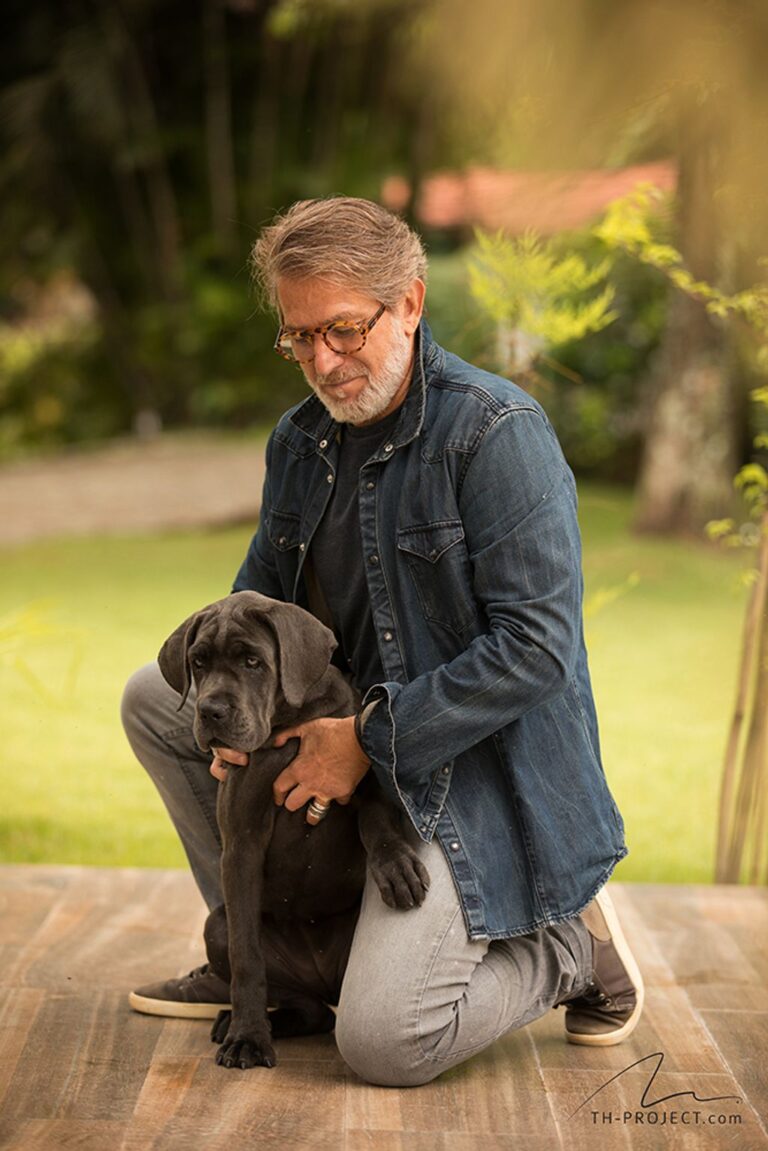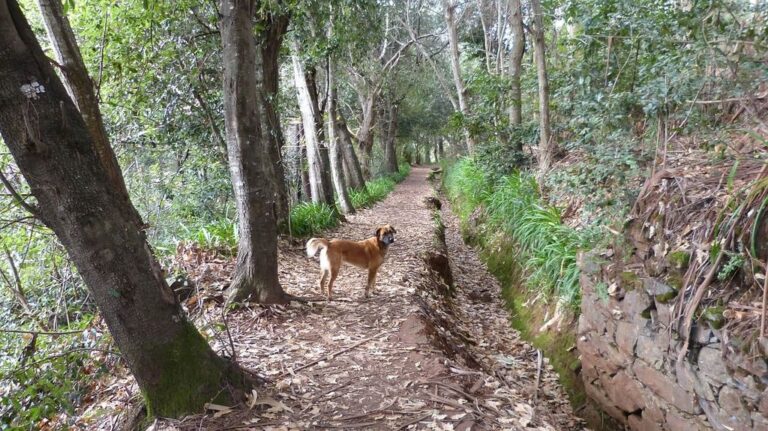How to calm down an anxious dog
Anxiety in dogs can be a challenging issue to address, but with the right approach, you can help calm down your furry friend. Understanding the signs and causes of anxiety is the first step in finding effective solutions. Creating a calm environment, establishing a routine, and using positive reinforcement training techniques can all contribute to reducing your dog’s anxiety. Additionally, natural remedies and supplements, as well as seeking professional help, can provide further support. In this article, we will explore these strategies and provide key takeaways to help you calm down your anxious dog.
Key Takeaways
- Understanding the signs and causes of anxiety in dogs is crucial for finding effective solutions.
- Creating a calm environment by designing a safe space and reducing noise and visual stimulation can help alleviate anxiety.
- Establishing a routine with consistent feeding and exercise schedules, as well as implementing relaxation techniques, can provide structure and comfort for your dog.
- Using positive reinforcement training techniques, such as rewarding calm behavior and teaching relaxation commands, can help build confidence and reduce anxiety.
- Exploring natural remedies and supplements, like herbal remedies and CBD oil, can provide additional support for calming your anxious dog.
Understanding Your Anxious Pup

Signs of Anxiety in Dogs
When it comes to our furry friends, it’s important to be able to recognize the signs of anxiety. Dogs can’t tell us when they’re feeling stressed, so it’s up to us to pay attention to their behavior. Some common signs of anxiety in dogs include panting, pacing, whining, and destructive behavior. If you notice any of these behaviors in your pup, it’s a good idea to take a closer look and see if there are any triggers causing their anxiety.
Here are a few key signs to watch out for:
- Panting: Excessive panting, especially when not hot or after exercise, can be a sign of anxiety.
- Pacing: Restlessness and constant movement, often in a repetitive pattern, can indicate anxiety.
- Whining: Excessive whining or whimpering, especially when there’s no apparent reason, may be a sign of anxiety.
- Destructive Behavior: Chewing on furniture, digging, or scratching excessively can be a result of anxiety.
Remember, every dog is unique, so they may exhibit different signs of anxiety. It’s important to observe your dog’s behavior and consult with a professional if you have any concerns.
Causes of Anxiety in Dogs
Anxiety in dogs can be caused by a variety of factors. It’s important to understand what may be triggering your furry friend’s anxiety so that you can help them calm down. Some common causes of anxiety in dogs include past traumatic experiences, separation anxiety, loud noises, and changes in their environment. By identifying the root cause of your dog’s anxiety, you can take steps to alleviate their stress and create a more peaceful environment for them.
Common Triggers for Anxious Dogs
An anxious dog can be triggered by various factors, causing them to become stressed and anxious. It’s important to understand these triggers in order to help your furry friend feel more calm and secure. One common trigger for anxious dogs is being in unfamiliar environments. When a dog is taken to a new place, they may feel overwhelmed and unsure, leading to anxiety. Another trigger can be loud noises, such as thunderstorms or fireworks. The sudden and loud sounds can startle and upset dogs, making them anxious. Additionally, changes in routine or disruptions to their daily life can also trigger anxiety in dogs. Dogs thrive on consistency and familiarity, so any sudden changes can cause them to feel unsettled and anxious.
Creating a Calm Environment

Designing a Safe Space for Your Dog
When it comes to designing a safe space for our furry friends, it’s important to consider their comfort and security. Dogs that experience anxiety often seek out a place where they feel safe and protected. By creating a designated area that meets their needs, we can help alleviate their stress and promote a sense of calm.
One of the first steps in recognizing signs of anxiety is to observe our dog’s behavior. They may exhibit behaviors such as excessive panting, pacing, or trembling. It’s crucial to pay attention to these signs and provide them with a safe space where they can retreat to when they feel overwhelmed.
To create a safe space, we can start by choosing a quiet and secluded area in our home. This can be a corner of a room or a specific room that is designated for our dog. It’s important to make sure this area is free from any potential triggers that may cause anxiety, such as loud noises or excessive foot traffic.
In addition to the physical space, we can also make the area more comfortable by providing soft bedding or blankets. This can create a cozy and inviting environment for our dog to relax in. Adding their favorite toys or a familiar scent, such as an article of clothing with our scent, can also help them feel more secure.
Remember, each dog is unique, so it’s essential to observe their behavior and adjust the safe space accordingly. By providing a designated area where they can feel safe and secure, we can help our anxious dogs find comfort and peace.
Using Soothing Scents and Sounds
When it comes to creating a calm environment for our anxious pup, soothing scents and sounds can play a crucial role. Aromatherapy and music therapy have been shown to have a calming effect on dogs, helping to reduce anxiety and promote relaxation. Here are a few ways you can incorporate soothing scents and sounds into your dog’s environment:
- Aromatherapy: Using essential oils such as lavender or chamomile can help create a calming atmosphere. You can use a diffuser or spray a diluted mixture of essential oils in your dog’s safe space.
- Music therapy: Playing soft, classical music or calming nature sounds can help drown out loud noises and create a peaceful ambiance for your dog.
Remember, every dog is unique, so it’s important to observe your dog’s reactions and adjust the scents and sounds accordingly. By creating a soothing environment, you can help your anxious pup feel more relaxed and at ease.
Reducing Noise and Visual Stimulation
When it comes to reducing noise and visual stimulation, we’ve found a few tricks that work wonders for our anxious pups. First, we make sure to create a quiet and peaceful environment for them. This means turning down the volume on the TV or radio, closing windows to minimize outside noise, and using curtains or blinds to block out excessive visual stimuli.
Next, we try to establish a relaxing routine that includes designated quiet times. This could be as simple as setting aside a specific time each day for some peaceful bonding with our furry friends. During these times, we avoid loud activities or sudden movements that could startle them.
In addition, we’ve found that using white noise machines or calming music can help drown out background noises and create a soothing atmosphere. These can be especially helpful during thunderstorms or fireworks, which are common triggers for anxiety in dogs.
Remember, every dog is unique, so it’s important to experiment and find what works best for your furry friend!
Establishing a Routine

Consistent Feeding and Exercise Schedule
When it comes to consistency in feeding and exercise, we’ve found that it’s the key to keeping our anxious dog calm and happy. Routine is everything for our furry friend, and sticking to a set schedule helps to reduce their anxiety levels. Here are a few tips to keep in mind:
- Feed your dog at the same time every day to establish a sense of security and predictability.
- Provide regular exercise to help burn off excess energy and promote relaxation.
- Incorporate mental stimulation activities, such as puzzle toys or training sessions, into their daily routine.
Remember, a consistent feeding and exercise schedule can work wonders in calming an anxious dog.
Implementing Relaxation Techniques
When it comes to helping our anxious dogs find some peace, relaxation techniques can be incredibly beneficial. These techniques are designed to help our furry friends calm down and feel more at ease. One effective technique is deep breathing exercises, which can help regulate their heart rate and promote relaxation. Another technique is progressive muscle relaxation, which involves tensing and then releasing different muscle groups to release tension and promote relaxation. By implementing these techniques, we can create a soothing environment for our dogs and help them feel more comfortable.
Setting Boundaries and Providing Structure
When it comes to setting boundaries and providing structure for our anxious dogs, consistency is key. Dogs thrive on routine and knowing what to expect, so it’s important to establish clear rules and boundaries in our daily interactions. This helps them feel secure and reduces their anxiety levels. Positive reinforcement is an effective tool in this process. By rewarding calm behavior and gently redirecting unwanted behaviors, we can help our dogs understand what is expected of them. It’s also important to remember that every dog is unique, so it’s essential to tailor our approach to their individual needs and personality.
Positive Reinforcement Training

Rewarding Calm Behavior
When it comes to calming down an anxious dog, rewarding calm behavior is key. By reinforcing moments of tranquility, we can help our furry friends feel more relaxed and secure. It’s important to remember that every dog is unique, so what works for one may not work for another. However, here are some general tips and techniques that can be effective in promoting a sense of calm in your pup:
Teaching Relaxation Commands
When it comes to teaching relaxation commands, we believe in using positive reinforcement techniques. Patience and consistency are key in helping your anxious dog learn to calm down. Start by choosing a command that you want to associate with relaxation, such as ‘settle’ or ‘relax’. Use a calm and soothing tone of voice when giving the command, and be sure to reward your dog with treats or praise when they respond correctly. Repetition is important, so practice the command in different situations and environments to help your dog generalize the behavior. Remember, every dog is unique, so it may take some time for them to fully grasp the concept of relaxation commands.
Building Confidence through Training
When it comes to helping our anxious dogs, training plays a crucial role in building their confidence. By teaching them new skills and rewarding their progress, we can help them overcome their fears and anxieties. Persistent dog anxiety can be challenging, but with patience and consistency, we can make a positive difference in our furry friend’s life. Here are a few tips to boost your dog’s confidence through training:
Natural Remedies and Supplements

Exploring Herbal Remedies
When it comes to herbal remedies, there are a variety of options that can help calm down an anxious dog. Lavender is known for its soothing properties and can be used in the form of essential oils or sprays. Another popular herb is chamomile, which can be brewed into a tea and added to your dog’s water or food. Additionally, valerian root is often used to promote relaxation and can be found in supplement form. It’s important to note that while herbal remedies can be beneficial, it’s always best to consult with a veterinarian before introducing any new treatments to your dog’s routine.
Here are a few herbal remedies that may help calm your anxious pup:
- Lavender: Use lavender essential oil or spray in your dog’s environment.
- Chamomile: Brew chamomile tea and add it to your dog’s water or food.
- Valerian root: Consider using valerian root supplements to promote relaxation.
Remember, it’s important to consult with a professional before trying any new remedies or supplements for your dog’s anxiety.
Using Calming Supplements
When it comes to helping our anxious pup, we’ve found that calming supplements can make a big difference. These supplements are designed to promote relaxation and reduce anxiety in dogs. They can be a great addition to your dog’s routine, especially during stressful situations.
Here are a few benefits of using calming supplements:
- Reduced anxiety: Calming supplements can help to calm your dog’s nerves and reduce overall anxiety levels.
- Improved sleep: Many calming supplements contain ingredients that promote better sleep, helping your dog to feel more rested and relaxed.
- Enhanced focus: Some supplements can improve your dog’s ability to concentrate and stay calm in challenging situations.
Remember, it’s important to consult with your veterinarian before starting your dog on any new supplements. They can provide guidance on the best options for your dog’s specific needs.
Tip: When choosing a calming supplement, look for ones that contain natural ingredients like chamomile, valerian root, or L-theanine.
Trying CBD Oil for Anxiety
When it comes to finding ways to calm down an anxious dog, we’ve tried various methods. One option that has shown promise is CBD oil. CBD oil is derived from the cannabis plant but does not contain THC, so it won’t get your dog high. It has been found to have calming effects on dogs, helping to reduce anxiety and promote relaxation. While it may not completely stop anxiety in dogs, it can be a helpful tool in managing their symptoms.
Seeking Professional Help

Consulting with a Veterinarian
When it comes to addressing your dog’s anxiety, consulting with a veterinarian is an important first step. Veterinarians have the knowledge and expertise to help identify the underlying causes of your dog’s anxiety and recommend appropriate treatment options. They can also rule out any medical conditions that may be contributing to your dog’s anxious behavior.
During your visit, be sure to provide your veterinarian with a detailed history of your dog’s anxiety symptoms, including any triggers or patterns you have noticed. This information will help them make an accurate diagnosis and develop a tailored treatment plan.
In addition to medication options, your veterinarian may also suggest behavioral modifications and lifestyle changes that can help alleviate your dog’s anxiety. These may include implementing a consistent routine, providing mental and physical stimulation, and using positive reinforcement training techniques.
Remember, every dog is unique, and what works for one may not work for another. So don’t hesitate to reach out to a veterinarian for professional guidance and support on your journey to helping your anxious pup.
Working with a Certified Dog Trainer
When it comes to addressing your dog’s anxiety, working with a certified dog trainer can be incredibly helpful. These professionals have the knowledge and experience to understand the underlying causes of your dog’s anxiety and can provide you with the guidance and support you need.
Here are a few reasons why working with a certified dog trainer is beneficial:
-
Expertise: Certified dog trainers have undergone extensive training and education to understand dog behavior and psychology. They can assess your dog’s anxiety triggers and develop a personalized training plan to address them.
-
Techniques and Strategies: A certified dog trainer can teach you effective techniques and strategies to help calm your anxious dog. They can show you how to use positive reinforcement training methods to reward calm behavior and reduce anxiety.
-
Support and Accountability: Working with a certified dog trainer provides ongoing support and accountability. They can guide you through the training process, answer your questions, and help you stay consistent in implementing the training plan.
Remember, every dog is unique, and what works for one dog may not work for another. A certified dog trainer can tailor their approach to meet your dog’s specific needs and help you create a calm and happy environment for your furry friend.
In conclusion
Helping your anxious dog find calmness and peace is possible with the right approach. By understanding the signs and causes of anxiety, creating a calm environment, establishing a routine, using positive reinforcement training, exploring natural remedies and supplements, and seeking professional help when needed, you can make a positive difference in your dog’s life. Remember, patience and consistency are key, and with time, your furry friend can overcome their anxiety and live a happier, more relaxed life. So, take a deep breath, you’ve got this!
Frequently Asked Questions
How do I know if my dog is anxious?
Some common signs of anxiety in dogs include excessive barking, panting, pacing, trembling, and destructive behavior.
What are the causes of anxiety in dogs?
Anxiety in dogs can be caused by various factors such as past trauma, separation anxiety, fear of loud noises, or lack of socialization.
How can I create a calm environment for my anxious dog?
You can create a calm environment for your anxious dog by designing a safe space, using soothing scents and sounds, and reducing noise and visual stimulation.
Should I establish a routine for my anxious dog?
Yes, establishing a routine can help reduce anxiety in dogs. Consistent feeding and exercise schedules, relaxation techniques, and setting boundaries can provide structure and security.
Can positive reinforcement training help calm an anxious dog?
Yes, positive reinforcement training can be effective in calming anxious dogs. Rewarding calm behavior, teaching relaxation commands, and building confidence through training can help alleviate anxiety.
Are there natural remedies and supplements for anxious dogs?
Yes, there are natural remedies and supplements that can help reduce anxiety in dogs. Herbal remedies, calming supplements, and CBD oil are some options to explore.






